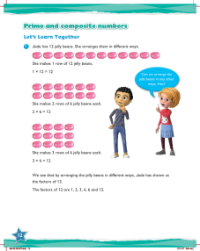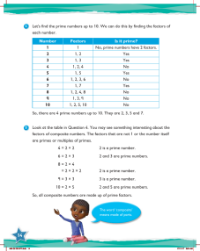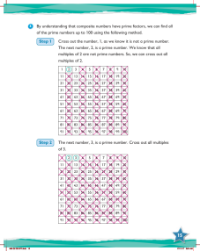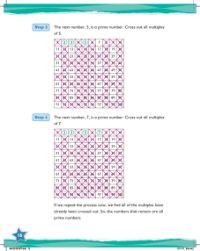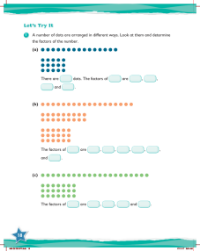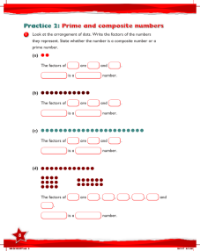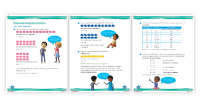Max Maths, Year 6, Practice, Prime and composite numbers
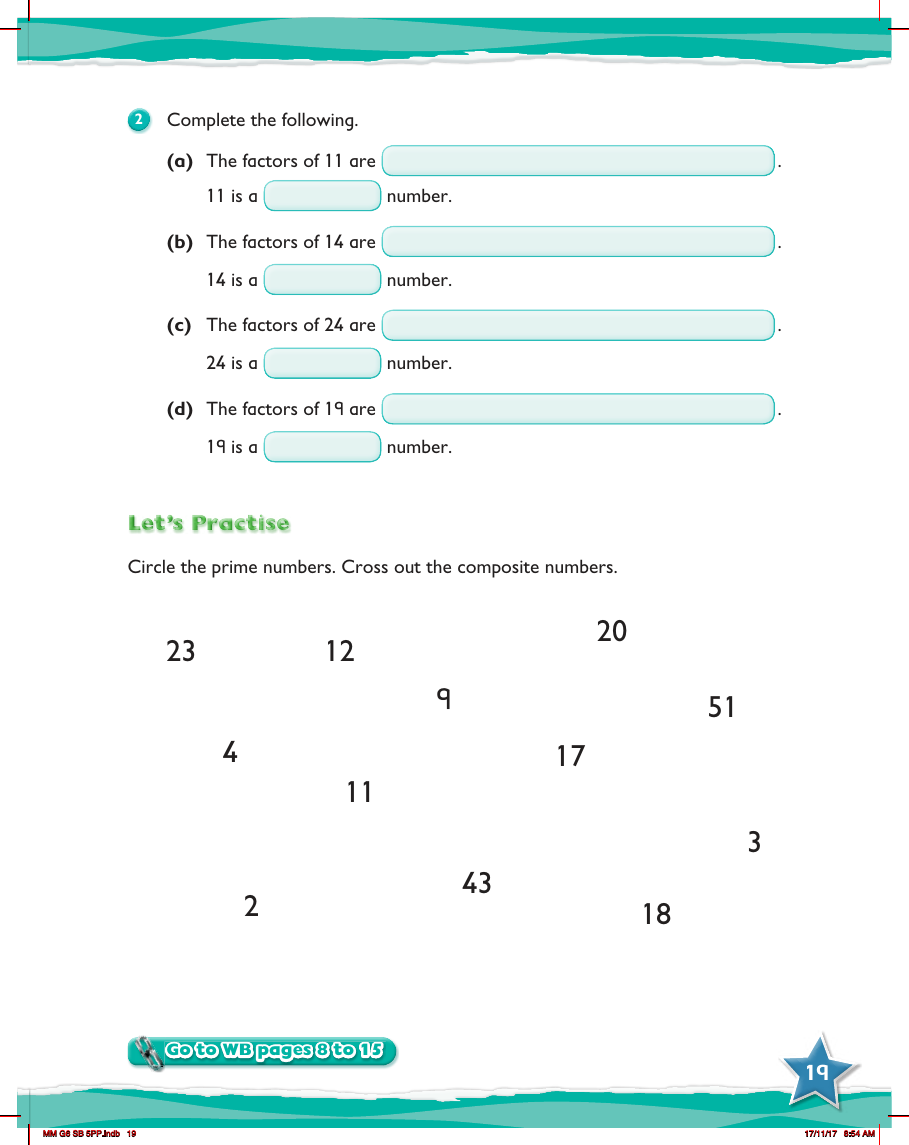
Maths Resource Description
In a mathematics practice exercise for Year 6 students, the focus is on distinguishing between prime and composite numbers. The exercise starts with identifying the factors of given numbers and then classifying each number as either prime or composite. For instance, the factors of 11 are 1 and 11 itself, indicating that 11 is a prime number because it has only two distinct factors. Conversely, the number 14 has more factors, specifically 1, 2, 7, and 14, making it a composite number due to having more than two factors.
The exercise continues with a practical activity where students are asked to identify prime and composite numbers from a list. They are instructed to circle the prime numbers, which have only two factors, and cross out the composite numbers, which have more than two factors. Numbers such as 23, 11, 17, 2, 3, 19, and 43 are prime, while numbers like 12, 20, 18, 51, 4, and 9 are composite. This hands-on approach helps students reinforce their understanding of the concept. The exercise is part of a broader set of practice problems found in the workbook, spanning pages 8 to 15, designed to strengthen students' number theory skills.
